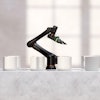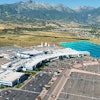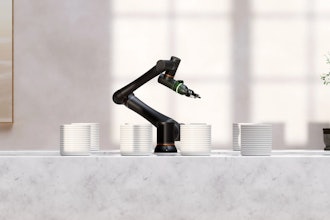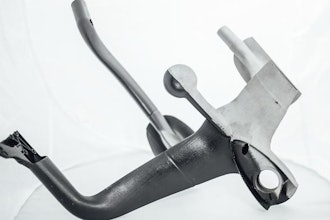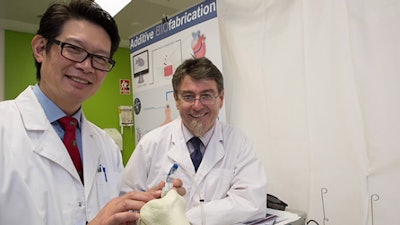
In a landmark proof-of-concept experiment, Australian researchers have used a handheld 3D printing pen to "draw" human stem cells in freeform patterns with extremely high survival rates.
The device, developed out of collaboration between ARC Centre of Excellence for Electromaterials Science (ACES) researchers and orthopedic surgeons at St Vincent's Hospital in Melbourne, is designed to allow surgeons to sculpt customized cartilage implants during surgery. Using a hydrogel bio-ink to carry and support living human stem cells, and a low powered light source to solidify the ink, the pen delivers a cell survival rate in excess of 97 percent.
3D bio-printers have the potential to revolutionize tissue engineering, as they can be used to print cells, layer-by-layer, to build up artificial tissues for implantation.But in some applications, such as cartilage repair, the exact geometry of an implant cannot be precisely known prior to surgery. This makes it extremely difficult to prepare an artificial cartilage implant.
The Biopen special is held in the surgeon's hands, allowing the surgeon unprecedented control in treating defects by filling them with bespoke scaffolds. Professor Peter Choong, Director of Orthopedics at St Vincent's Hospital Melbourne, developed the concept with ACES Director Professor Gordon Wallace.
The team designed the BioPen with the practical constraints of surgery in mind and fabricated it using 3D printed medical grade plastic and titanium. The device is small, lightweight, ergonomic and can be sterilized. A low-power light source is fixed to the device and solidifies the inks during dispensing.
"The biopen project highlights both the challenges and exciting opportunities in multidisciplinary research. When we get it right we can make extraordinary progress at a rapid rate," Professor Wallace said. The work was is published journal Biofabrication.
Design expertise and fabrication of the BioPen was supported by the Materials Node of the Australian National Fabrication Facility.

